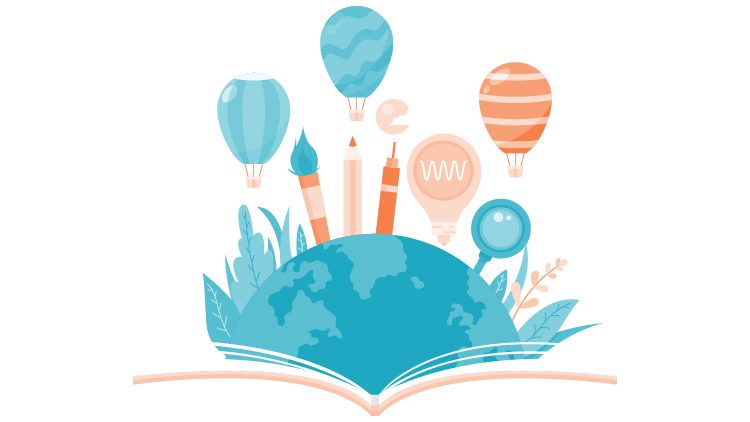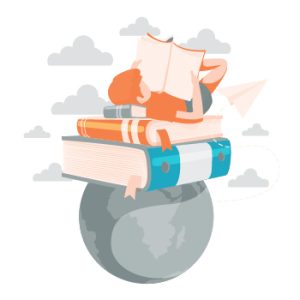What Are The Most Translated Books in The World?

The Bible
The Bible is the most translated book in the world. This religious text contains the sacred writings of Judaism and Christianity, and its translations have been an essential tool for missionaries spreading the faith around the world. The first English translation of the Bible was published in 1382, and it remains one of the most popular books in translation to date. Interestingly, the translation of the Bible is not a straightforward task.
Due to the text’s religious significance, many translators must consider their language’s theological nuances when interpreting the original text. Despite this challenge, numerous translators have taken on the task of bringing this ancient text to different cultures. Some translations of the Bible have been notable for their impact on culture and literature. For example, John Wycliffe’s translation of the Bible into Middle English played a crucial role in developing the English language.
In contrast, the King James Version, published in 1611, remains one of the most popular English translations of the Bible. While the Bible remains a vital religious book to many people, it’s not the only popular book in translation. Other single books, such as Don Quixote or Alice’s Adventures in Wonderland, have become cultural touchstones worldwide. Popular comic series like Pippi Longstocking and Albert Uderzo’s Asterix have also been translated into multiple languages.
Additionally, Tao Te Ching, Jules Verne’s works, and chivalric romance novels like Amadis of Gaul have enjoyed global popularity thanks to their translations. The Bible’s popularity as a religious text has ensured it remains the most translated book worldwide. Its translations have helped to spread the Christian faith worldwide, but other books in translation have also left an indelible mark on the global literary landscape.


Alice’s Adventures in Wonderland
Alice’s Adventures in Wonderland is a children’s classic novel by Lewis Carroll in 1865. The story is about a young girl named Alice who falls down a rabbit hole into a surreal and nonsensical world filled with peculiar creatures and talking animals. The novel has been translated into over 170 languages and is considered one of the most popular and enduring stories ever.
Alice’s Adventures in Wonderland is enduring and beloved across cultures and generations because of its imaginative and whimsical characters and settings. The story’s iconic figures, such as the Cheshire Cat, the Queen of Hearts, and the Mad Hatter, have become household names and cultural touchstones. Lewis Carroll’s writing style, blended with playful wordplay and satirical wit, has also been praised for influencing modern and children’s literature.
Interestingly, Alice’s Adventures in Wonderland is not the only famous children’s story translated into numerous languages. Carlo Collodi’s Pinocchio and Antoine De Saint-Exupéry’s The Little Prince are also among the most translated books in the world. Even comic book heroes like Superman and Spider-Man have been translated into dozens of languages and have become international icons.
Despite the ubiquity of modern technology and instant translation services, the enduring popularity of classic novels like Alice’s Adventures in Wonderland demonstrates the timeless power of storytelling. These books continue to capture readers’ imaginations of all ages and backgrounds, inspiring generations of children and adults alike.
Pinocchio
Another classic children’s book that has been translated into many languages is Pinocchio. The story follows the adventures of a wooden puppet who dreams of becoming a real boy. The book was written by Carlo Collodi, an Italian author, in 1883. Pinocchio’s universal appeal lies in its message about the importance of honesty and integrity. The story teaches children about the consequences of lying and how it can affect one’s life. The character of Pinocchio is also beloved for his mischievous and adventurous nature, which has captured the hearts of readers for generations.
Interestingly, one of the most famous translations of Pinocchio was by Antoine De Saint-Exupéry, the author of The Little Prince. His French translation of Pinocchio is considered one of the book’s most accurate and poetic translations. Pinocchio has been adapted into countless movies, TV shows, and plays, making it a cultural icon. Its global popularity has made it one of the most translated books in history.


Don Quixote
Don Quixote, written by Spanish author Miguel de Cervantes, is another popular book translated into numerous languages. This book tells the story of a man who becomes so engrossed in tales of chivalry that he decides to become a knight and sets out on a series of adventures with his loyal squire, Sancho Panza. Even though Don Quixote’s quests often end in disaster, he remains an endearing character whose passion for adventure captures readers’ hearts worldwide.
One interesting fact about Don Quixote’s translations is that they often differ significantly from the original Spanish text. Antoine De Saint-Exupéry, the author of The Little Prince, once famously said that he had read Don Quixote in four different languages and found that each version was vastly different. This shows how even the most famous and well-loved books can take on new meanings and interpretations when translated into other languages.
Harry Potter and the Philosopher’s Stone
Another trendy book translated into countless languages is Harry Potter and the Philosopher’s Stone by J.K. Rowling. Initially published in 1997, the novel introduced the world to the magical universe of Hogwarts School of Witchcraft and Wizardry and beloved characters like Harry, Ron, and Hermione. It has been translated into over 80 languages, with the first translation being in Latin. The book’s popularity only grew with the release of the film adaptations, making it a truly global phenomenon.
Interestingly, the French translation of the book has some notable differences from the original English version. The translator, Jean-François Ménard, deliberately changed some of the names and terms to better resonate with a French audience. For example, he translated the Hogwarts houses as Gryffondor, Poufsouffle, Serdaigle, and Serpentard rather than the English versions of Gryffindor, Hufflepuff, Ravenclaw, and Slytherin.
It’s worth noting that Harry Potter and the Philosopher’s Stone has also been translated into the fictional language of Quenya, created by J.R.R. Tolkien for his Middle-earth stories. This translation was the work of a group of enthusiasts and was published online, highlighting the dedication and passion this book series has inspired in its fans.
Despite its success, Harry Potter and the Philosopher’s Stone is still far from being the most translated book in the world. However, it is undoubtedly one of the most beloved and has captivated audiences of all ages across the globe. As Antoine de Saint-Exupéry said, “Books are a unique and portable magic,” Harry Potter is a shining example of that magic in action. Read more about the Bible translation.
And Then There Were None
“And Then There Were None” is a mystery novel by Agatha Christie. It was first published in 1939 and has since been translated into over 50 languages. The book is widely regarded as one of Christie’s best works, and it has sold millions of copies worldwide.
Interestingly, “And Then There Were None” was initially titled “Ten Little N*****s” after a nursery rhyme that appears throughout the novel. However, as the title was deemed offensive, it was later changed to “Ten Little Indians” and “And Then There Were None”. The book tells the story of ten strangers invited to an isolated island. Once there, they are accused of various crimes and die off individually.
As the survivors try to figure out who the killer is, tensions rise, and secrets are revealed. “And Then There Were None” has been adapted into various films and TV shows, but the novel remains a classic in the mystery genre. It has been translated into German, French, Spanish, Italian, and Japanese. Interestingly, “And Then There Were None” was not the only book that Christie wrote that had been widely translated. Another one of her most famous works, “Murder on the Orient Express,” has also been translated into numerous languages.
The Little Prince
The Little Prince is a timeless classic that has captured readers’ hearts worldwide. Written by French author Antoine De Saint-Exupéry, it has been translated into more than 300 languages and dialects, making it one of the most widely translated books ever. The story follows a young prince who travels the galaxy, visiting various planets and meeting many unusual characters. Through encounters, he learns valuable lessons about life, love, and the human condition. The Little Prince is a philosophical tale that appeals to children and adults, with themes of friendship, sacrifice, and the importance of imagination.
Antoine De Saint-Exupéry was an accomplished author, skilled aviator, and adventurer. He wrote The Little Prince while living in New York during World War II, first published in 1943. The book was an instant success, and it remains a beloved classic. The Little Prince has been adapted into numerous stage plays, operas, and feature films. Its popularity shows no signs of waning as new generations discover its timeless wisdom and whimsical charm. If you haven’t read The Little Prince, you’re missing out on one of the greatest literary works ever.
Frequently Asked Questions
When a book is translated, it means that its original text, written in one language, has been converted into another language, allowing readers who are not fluent in the original language to access and understand the content.
Several factors contribute to the popularity and comprehensive translation of specific texts, including their cultural significance, universal themes, literary quality, commercial success, and the author’s international reputation.
“The Bible” has been translated into over 700 languages, making it one of the world’s most widely translated and distributed books.
While “The Little Prince” is often cited as one of the most translated books, it is difficult to determine a definitive ranking. However, it has been translated into over 300 languages, solidifying its place among the most widely translated works.
Identifying a single book with the most translations is challenging due to variations in data sources and editions. However, “The Bible” is widely regarded as having the highest number of translations across different languages.




